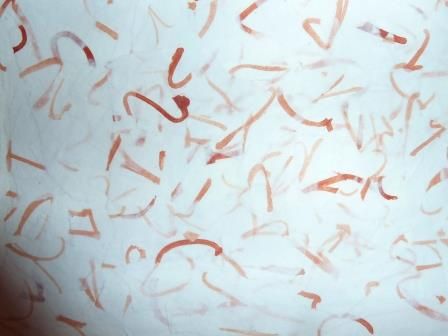All ready and packed to set up my installation for w0budong – an exhibition of writing without meaning, in Manchester tomorrow.
I have decided to set my stones on a long, narrow piece of canvas. The only ingredient missing to make this piece a painting is the oil/medium as the stone could be ground down to grey and ochre pigment.
I am excited to see how others’ work looks in the exhibition and what my stone writing looks like in the space at Picadilly Place, Manchester.
I have seen a lot of my local river now and I have a lot of stones hanging around now.
I’ve unrolled a long, narrow piece of card and laid the stones out on it, joining the marks of each one to the next as fluently as I can.
What is the meaning of finding gestures within stones from the Earth? These layers were laid down millions of years ago and then the erosion of the soil and the meandering path of the river has revealed and shaped the stones I have now.
Because the marks have been found, does that necessarily mean that what I have formed with them has no meaning?
Instead of writing on the stones I have choosen to find it in stones. So I have gone from being in control thoguh the writing was illegible, to having less control and relying on what I discover.
There are a mixture of stones in this area and I choose the most fragile, brittle one. This quality wasn’t why this rock type was chosen, but it is a part of the work due to the crumbling, powdery aesthetic of the work.
I have spent time at the river and been given access to a particularly good spot through a private garden.
Laying them out to try and join marks is a struggle. They are not highly defined; they are subtle marks.
I now have a fair few stones, and while I don’t think they are enough, I know I need to work with what I’ve got, to see what they form before finding more.
I have gathered further 2 tone clay stones and laid them out. Still wet from the river the defination of the border lines between grey and pink clay isn’t so strong.
I am laying them out trying to join together elements of gesture found within each stone.
There are passages that catch my eye, but the marks don’t join up as I had hoped.
(Trouble uploading pics again – look on http://twitpic.com/dwm4eu and http://twitpic.com/dwm43m for images linked with this post)
I have had the good furtune to mention to a fellow student my interest in a type of rock and just as luck would have it he had an previous colleague who is a geologist. I have emailed him this evening and have already had a reply about the rust/grey rock.
Clay formed in the Devonian period as part of the “old red sandstone” when Britain was on the edge of giant desert. Formed in a shallow “playa” (an area of flat, dried-up land, especially a desert basin from which water evaporates quickly) lake formed when a flash flood washed down onto the desert plain.
I do enjoy a good back-story!









